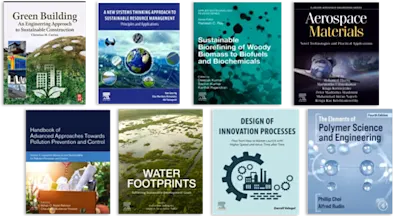SUSTAINABLE DEVELOPMENT
Innovate. Sustain. Transform.
Save up to 30% on top Physical Sciences & Engineering titles!

Make complex blood banking concepts easier to understand with Basic & Applied Concepts of Blood Banking and Transfusion Practices, 5th Edition. Combining the latest informati… Read more

SUSTAINABLE DEVELOPMENT
Save up to 30% on top Physical Sciences & Engineering titles!

Make complex blood banking concepts easier to understand with Basic & Applied Concepts of Blood Banking and Transfusion Practices, 5th Edition. Combining the latest information in a highly digestible format, this approachable text helps you easily master all areas of blood banking by utilizing common theory, clinical scenarios, case studies, and critical-thinking exercises. With robust user resources and expanded content on disease testing and DNA, it’s the effective learning resource you need to successfully work in the modern lab.
PH